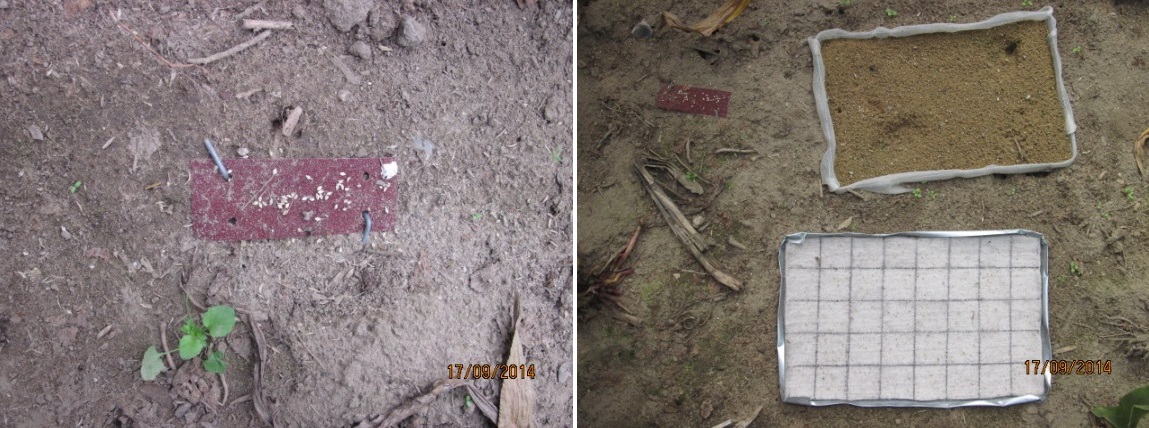Comparison of three methods to measure weed seed predation in arable fields
MSc Christoph Seifert
The usual method to measure seed predation is by means of so-called seed cards where seeds are glued with repositionable glue to small cards made of sandpaper (picture). However, seed cards can typically contain only 30-100 seeds. If seed predation rates are high, this amount of seeds is removed within a day, leaving nothing to measure. Other disadvantages of seed cards are that seeds on seed cards are more conspicuous than on the soil surface, have no means to gradually disappear into the subsoil, and cannot be removed from the card by invertebrate predators. Furthermore, the sand paper that is used as a substrate for the seeds may influence seed predator behaviour. Consequently, estimates obtained by seed cards 1) may not reflect real seed predation rates and 2) are only short-term ‘point-estimates’ that need to be scaled to long-term estimates.
As an alternative, so-called seed trays can be used where seeds are applied to trays that contain seed-free soil. These trays are placed in the soil, such that the top is level with the soil surface. Seed trays eliminate all of the disadvantages mentioned for seed cards, but a disadvantage is that evaluating seed trays is extremely laborious.
As a second alternative, seeds could be offered to seed predators on another substrate than sand paper. This substrate should be able to a) simulate soil conditions, b) contain many more seeds than seed cards, c) withstand adverse weather conditions (i.e., rain) and 4) have little effect on seed predators behaviour (i.e., no glue).
For this purpose, the three methods, namely seed cards, seed trays and seeds on an alternative substrate were compared (see picture).
MSc thesis Universität Rostock 2015
Christoph Seifert - Vergleich von drei unterschiedlichen Messmethoden zu Samenprädation im Feld.

